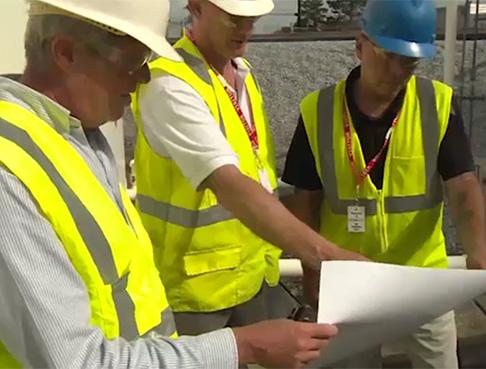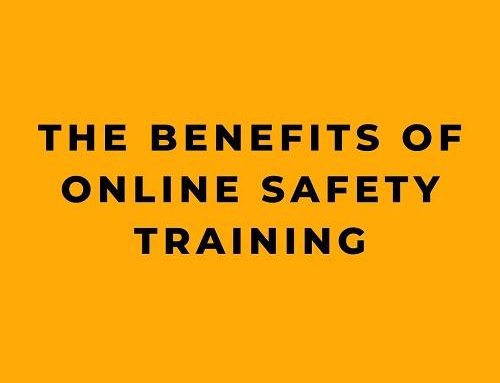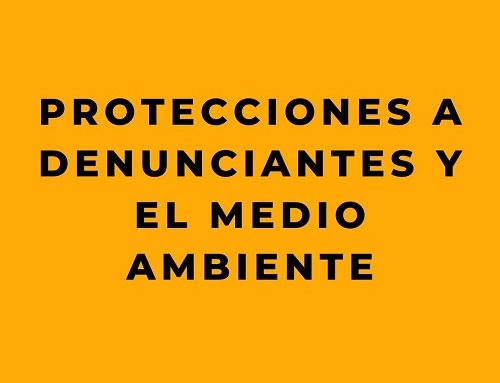Introduction
Workplace safety begins with hazard recognition. This vital process helps identify risks before they cause accidents and injuries. The following article summarizes key information on hazard recognition, extracted from an online workplace safety training course.
How Hazard Recognition Works
Hazard recognition is a proactive approach to safety that tries to spot workplace dangers before they lead to accidents and injuries. The basic principle is simple – when you see hazards coming, it’s easier to avoid them. The hazard recognition process involves looking for risks, evaluating them, and taking steps to control or eliminate them.
According to the Occupational Safety and Health Administration (OSHA), over 3 million workplace injuries and illnesses occur annually in the United States, resulting in more than 4,500 deaths. Rather than chalking these incidents up to bad luck, hazard recognition acknowledges that accidents are statistically likely to happen when hazards are present. Workplaces with more uncontrolled hazards have greater risk and are prone to more accidents.
The relationship between hazards and accidents is illustrated by the “safety pyramid.” At the base of the pyramid is the number of existing hazards. Progressing up the pyramid, each layer depicts the incidents that may stem from those hazards – near misses, minor injuries, major injuries, and fatalities. More hazards at the bottom of the pyramid drive increased accidents, injuries and deaths at the top. Studies indicate that for every 20,000 hazards, approximately 1,500 near misses, 300 minor injuries, 27 major injuries and one fatality will occur. While the exact ratios may vary by industry, the correlation is clear – when hazards go unaddressed, accidents will eventually happen.
Hazard recognition aims to prevent accidents by identifying and mitigating hazards. As more risks are eliminated or controlled, all associated incident numbers decline as well. This is why hazard recognition is fundamental to any workplace safety program.
Categories of Hazards
Most workplace accidents involve a combination of hazardous conditions and unsafe acts. Hazardous conditions encompass any situation with injury potential for employees. These hazards generally fall into four major categories:
- Physical hazards – Conditions that can cause injury through force and energy, including slip, trip and fall hazards, getting struck by objects, caught in or between machinery, electrocution, and exposure to extreme temperatures.
- Ergonomic hazards – Risk factors such as repetitive motions, excessive force, awkward postures, vibration and lifting loads that can cause musculoskeletal disorders.
- Chemical hazards – Exposure to toxic, corrosive or sensitizing substances, as well as oxygen displacement and explosion risks from chemicals and their fumes.
- Biological hazards – Viruses, bacteria, mold, plants, insects, animals and other living organisms that can cause illness or injury if not properly controlled.
Any of these hazardous conditions become more dangerous when combined with unsafe acts – behaviors that violate safety procedures and introduce needless risk. Examples include disabling machine guards, not using personal protective equipment properly, using defective tools and taking shortcuts instead of following safety protocols.
Some hazards and unsafe acts can seem obvious or generic and are dismissed instead of addressed. A cluttered floor that no one bothers to clean can easily cause slips and falls. An exit route that gets casually blocked may prevent escape in an emergency. Having “just a few drinks” before work or bending safety rules to work faster are unsafe acts that can have disastrous consequences, yet often go uncorrected. Hazard recognition aims to uncover ALL risks by taking a systematic approach.
Tools for Identifying Hazards
Hazard recognition utilizes three key tools to reveal and evaluate risks:
- Job hazard analysis – Before beginning new operations or procedures, managers analyze the tasks required to identify potential hazards. Safety measures are determined to mitigate or eliminate these risks. Employees can provide input to help recognize hazards they may encounter while doing the work.
- Inspections – Regular inspections of tools, equipment and work areas spot hazards before work begins. Inspections are required at the start of each shift or before undertaking specific hazardous tasks. Detailed checklists developed through job hazard analysis ensure that inspections are thorough.
- Work permits – Permits are mandated for the highest risk tasks. Employees must describe the job, hazards involved and hazard control methods on the permit. Managers review and approve work permits before allowing such work to begin. This ensures risks are recognized and addressed.
Recognizing Hazards in Real Time
In addition to these proactive tools, hazard recognition also involves identifying risks in the moment while working. Employees should frequently ask themselves “What are the hazards here?” and be alert to any dangerous conditions in their immediate surroundings. This situational awareness enables workers to take quick action when hazards pop up unexpectedly.
When a hazard is spotted, it should be mitigated on the spot if safely possible. If not, employees should immediately report significant hazards to supervisors so that corrective action can be taken. Coworkers should also be warned about serious risks that are identified.
Speaking up when others are engaged in unsafe acts can prevent injuries, too. Unsafe behaviors should be addressed in a constructive manner, focusing on explanations rather than accusations. The goal is to build a culture of open communication that regards safety as everyone’s responsibility.
Analyzing Accidents and Near Misses
Even when applying hazard recognition practices, accidents may still occur. Thorough accident investigations are critical to uncover all contributing factors and root causes. This helps prevent recurrences by identifying hazards that were missed or methods that failed to control a risk.
Looking beyond obvious causes reveals vital information. For instance, an employee falling from a ladder may appear to result simply from standing on the top rung. But investigation could find the actual root cause to be an under-sized ladder for the task. This shows that purchasing taller ladders is the safety solution, rather than just scolding workers for misusing equipment.
Near miss reporting and analysis provides similar opportunities to address hazards before they cause injury. By examining close calls, underlying risks can be identified and corrected before the worst occurs.
The Power of Proactive Hazard Recognition
Hazard recognition aims to find as many dangers as possible before accidents happen. But achieving this requires vigilance and communication at all levels of an organization. When employees and leaders embrace hazard ID principles and make them part of the organizational safety culture, work becomes intrinsically safer. Consistently recognizing and mitigating hazards helps prevent injuries, reduce costs and boost productivity – making hazard recognition one of the most valuable tools for any safety program.
Conclusion
Hazard recognition provides a proactive approach to safety by systematically identifying workplace risks and taking steps to control or eliminate them. While accidents can never be entirely eliminated, organizations that instill hazard recognition principles substantially reduce their incident rates and create reliably safer work for all.
As we’ve seen, hazard recognition is not just a policy but a proactive, dynamic approach integral to workplace safety. It’s an interplay of vigilance, communication, and action that involves everyone, from employees to management. The process begins with identifying risks, comprehensively evaluating them, and then taking robust measures to control or mitigate them. Ultimately, hazard recognition is not just a strategy but a culture—a culture that must permeate every facet of an organization. It’s clear that merely recognizing the importance of this culture is not enough; one must actively participate and invest in it.
Which brings us to an actionable solution. While hazard recognition can’t prevent every accident, organizations that imbibe these principles drastically cut down their incident rates. Here’s how you can take your organization’s hazard recognition culture from theory to practice: Invest in Our “Hazard Recognition” full-length interactive courses. These courses are tailor-made to transform the way your organization approaches safety, turning it from a mandatory checkbox into a life-saving culture.
Imagine this—every year, more than 3 million workers are injured on the job, and tragically, over 4,500 lose their lives. These aren’t just statistics; they’re husbands, wives, parents, and friends. The chilling reality is, most of these incidents are preventable. And that’s exactly where Our “Hazard Recognition” training courses come in. This isn’t just another box to check off in your annual training plan. It’s a lifeline that can drastically change the statistics and save lives.
Our training courses are designed to be more than just informational; they’re transformational. We target not just the ‘what’ but the ‘why,’ ingraining the importance of hazard recognition into the very fabric of your organizational culture. Employees leave not just educated, but empowered to act.
Why Our Full-Length Interactive Courses Stand Out:
- Deep Dives: While micro-learning has its place, our full-length courses offer the deep immersion your team needs to internalize these life-saving concepts.
- Real-Time Hazard Recognition: This isn’t just theoretical. We offer real-time tools and strategies that can be applied in the here and now.
- Multilingual Support: Inclusivity is key in any work environment. Our full-length courses are available in both English and Spanish to cater to a diverse workforce.
Topics Include:
- The profound need for hazard recognition in today’s workplaces
- Understanding the difference between hazardous conditions and unsafe acts
- Proactive techniques for identifying hazards in advance
- Tools for on-the-spot, real-time hazard recognition
- In-depth methodologies for investigating accidents and near misses
Don’t let your employees become statistics. Let them become the solution.
Access our detailed course outline in PDF format and make the proactive choice today. Invest in Our “Hazard Recognition” full-length interactive courses, because every life is invaluable.
To view a free demonstration of this course and our learning management system (LMS), click the link below:










